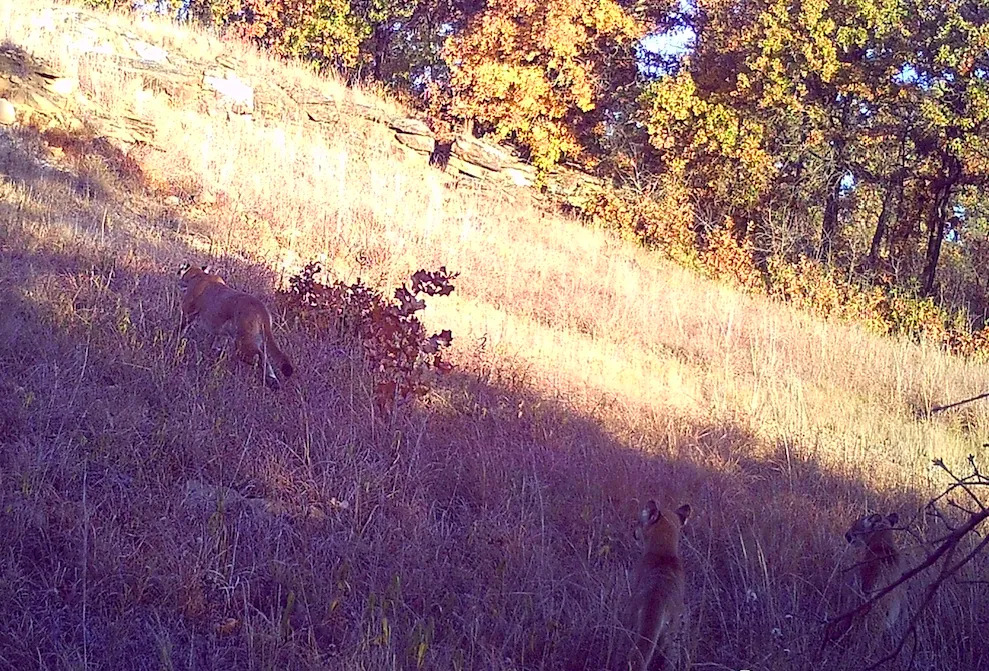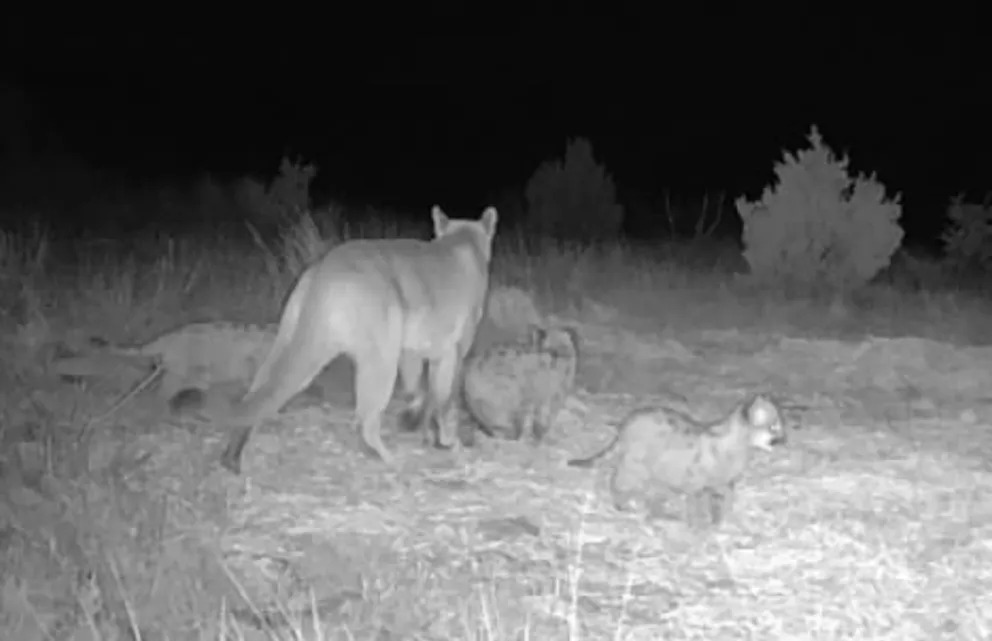Much to the surprise of wildlife biologists, a predator has been confirmed to be reproducing in states that haven’t seen the likes for over 125 years. Since the arrival of European settlers in the early 1800s, many states saw a steady decline and eventual eradication of certain furbearers in their areas.
However, two separate mountain lions with kittens were confirmed by the Oklahoma Department of Wildlife Conservation (ODWC) in different regions of the state.
A photo was taken of an adult mountain lion with two kittens in Osage County in October 2024. Similarly, in Cimarron County, a picture was taken of an adult with three kittens.

Jerrod Davis, a furbearer biologist for the Wildlife Department, said in an interview, “While exciting and interesting, these sightings are just one small piece of the puzzle needed to better understand this species. It’s our first piece of evidence that mountain lions may be breeding in Oklahoma, a key indicator that the population is becoming established.”

He continued, saying, “It could open the door for potential research. Our first focus should be evaluating the abundance and distribution of mountain lions in the state. We’ve been confirming sightings through our online reporting process for more than 20 years and may deploy more intensive camera arrays.”
Since 2002, the Wildlife Department has confirmed 85 sightings of individuals, with an uptick in sightings since 2023. These two families represent the first ODWC-confirmed instances of possible mountain lion reproduction within Oklahoma. The same upward trend has been common amongst states in the Midwest Association of Fish and Wildlife Agencies. Prior to this photographic evidence of kittens, biologists had concluded that the numerous sightings and signs of mountain lions were of transient individuals. The closest established populations are in Texas, New Mexico, Colorado and Nebraska.
As these populations return, many are eager to see what follows.
